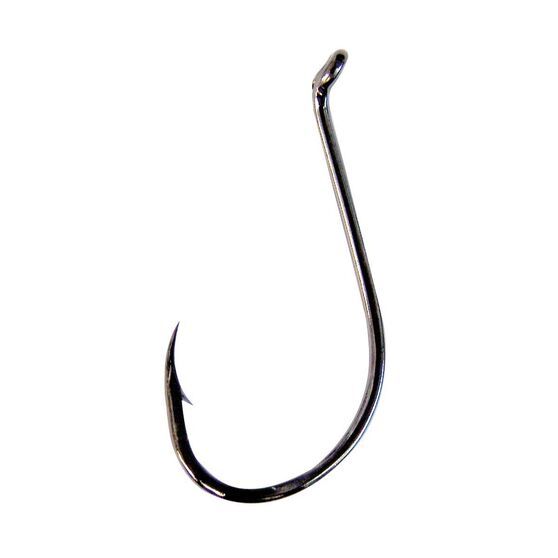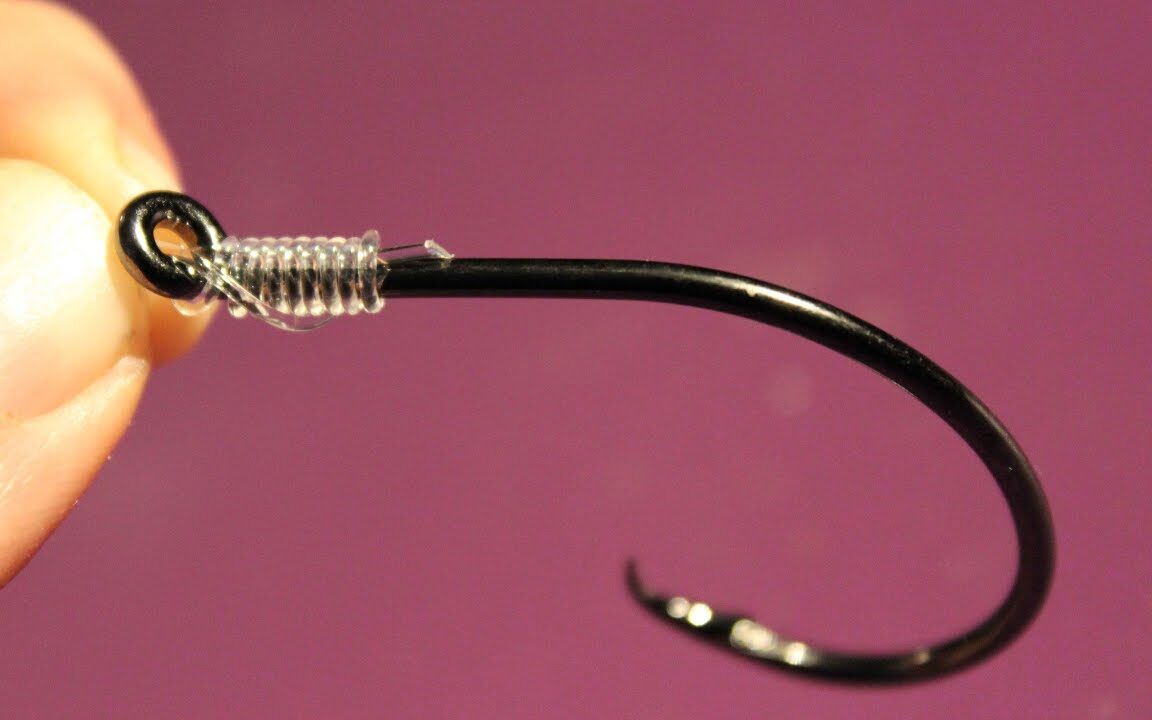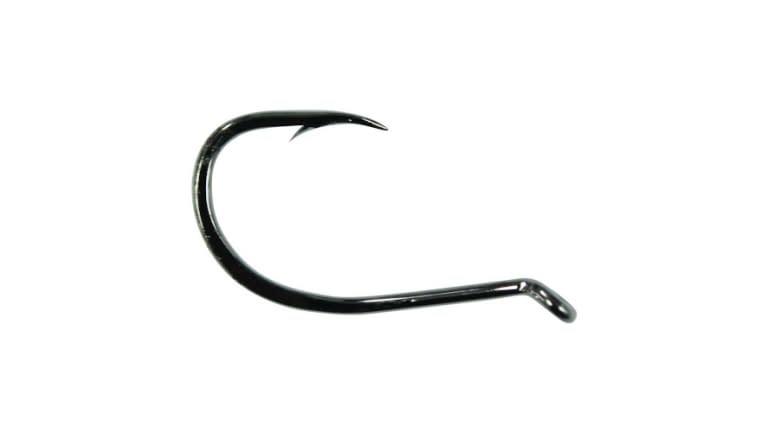Octopus hooks are versatile, multi-purpose fishing hooks characterized by their round bend, short shank, and inward-bent point. They are popular for their ability to securely hook a wide variety of fish species, making them a go-to option for anglers targeting everything from bass to salmon to catfish.
Many fishing brands have spent considerable time developing certain types of new, specialized hooks in the last decade. The circle hook has exponentially grown in popularity as it allows anglers to exercise more caution and give released fish a greater chance at surviving a catch with less potential for injury. The octopus hook is another specialty hook style that is also growing in status among experienced and professional anglers.
The octopus hook is one of the newer styles of specialty hooks available in the fishing industry, and many anglers are largely unfamiliar with them. These hooks bear certain similarities to the circle hooks and the j-hooks commonly used by anglers in various scenarios.
If you’re hoping to learn more about the octopus hook and how it compares to other hook styles, as well as when and where you might want to use it, we’ve compiled this article to help explain some of the finer points related to octopus hooks.

Table of Contents
What is an Octopus Hook?
For the most part, octopus hooks look very similar to circle hooks in the curved hook and the fact that it features a smaller barb on the end than most other types of specialty hooks. The main difference between an octopus hook, a circle hook, or even a j-hook is that the eye is bent backward at a sharp angle instead of being situated in a more straight-up-and-down orientation.
This bent-back angle is where the octopus hook derives its name from. It’s called an octopus hook simply because the eye and its orientation to the hook and barb seem to vaguely resemble an octopus, which typically has its head cocked back at an angle from its long, curved arm.
The overall purpose of the octopus hook is to function much like a regular circle hook in relation to how the hook is embedded into a fish’s mouth and how it can maintain that hookset without the fish getting free. The only major difference between the octopus hook and the circle hook is the angle at which the eye is set, which allows an angler to more easily ‘snell’ their hook with their fishing line if they want.
Snelling a hook means tying the knot of your fishing line onto the hook in a way that lets you easily use it as a leader line. With their angled eyelets, Octopus hooks are much easier to snell and can serve as an adequate leader line and hook used in various rigs.

Some anglers tie their knot directly to the eye of the octopus hook in some cases. There isn’t anything wrong with doing this, and it usually functions virtually the same as a typical circle hook might in such instances.
The tip or point of the hook is bent so that it is positioned at the same angle as the eye, in relation to the curvature of the hook itself. Some anglers have posited that this might interfere with your ability to get a solid hookset. However, this method and the octopus hook are still capable of providing an adequate hookset because you’re pulling the hook in the same direction that the eye and the line is oriented.
If the hook was not angled in such a way as to match the angle of the eye, there would be much greater potential for having a poor hookset. A quick inspection of how the hook orients itself when pressure is applied from the line will show that the purpose of having the hook angled in such a way is to ensure it allows for a decent hookset.

When to use Octopus Hooks?
For most anglers, octopus hooks are best used with live or natural bait in either freshwater or saltwater fishing scenarios. You can use the octopus hook as a snelled hook with a leader line, but it functions quite well when the line is tied directly to the eye. This allows you to hook your bait in certain ways that help with the overall bait presentation underwater, as well as with the hookset you’ll be able to get using these types of bait.
The most common baits used with an octopus hook in which the line has been tied directly to the eye are usually minnows, worms, or even leeches. The overall design of this type of hook makes it a great choice for anglers looking to hook larger-sized fish, such as catfish.
The fact that the hook is designed with a short shank and a wide, sweeping gap between the shank and the actual hook and barb makes it perfect for getting good hooksets on bigger fish.
Anglers most commonly use octopus hooks with live minnows because they can run the hook through the mouth and head portion of the minnow. By doing this, you allow the minnow’s tail and the rest of its body to be free, which helps add to the overall action and movement.
Put, the octopus hook allows a minnow and any other long, slender bait to have the ability to move around and flutter freely in the water. If the minnow is alive, any movement of its body and tail will be unobstructed by the hook, which will help attract predators to bite. If the minnow is dead, the angler can twitch their line to create the type of movement needed to entice most fish to bite.
How to Choose the Right Size Octopus Hook
Like any other type of fishing tackle and equipment, purchasing a good quality octopus hook will usually require spending more money than you might expect. Some more affordable brands produce cheaper octopus hooks, but the more prestigious brands will cost a bit more. It’s usually worth the investment to spend the extra money and be assured that you have a hook capable of withstanding the rigors of handling the species of fish you’re planning to go after.
Most anglers use octopus hooks that are a bit smaller and lighter than other hooks to create a more natural-looking bait presentation. With a smaller and more lightweight hook, you can get a higher amount of action out of the particular type of bait you’re using.
A wide variety of different size octopus hooks are usually indicated using the typical # format or the standard 1/0 method of distinguishing hook sizes. Picking the right size is crucial to your overall success as having a hook that’s too small will almost always result in fewer hookups. If you use a hook that’s large enough for the type of fish you’re going after, you can usually rest assured you will have an excellent chance of landing your catch.
You can also purchase octopus hooks in a variety of different colors as well. Some anglers like to use a painted or even colored metallic octopus hook to further add to the bait presentation. Having a red hook sometimes helps catch the eye of certain types of fish that are more visually aware than others.
Top Brands
Regarding some of the best brands that manufacture octopus hooks, you should look at the usual suspects at the top of the game in the fishing industry. Gamakatsu is one that many expert anglers turn to for specialty hooks as they are quality-made and usually stand up to nearly anything on the water.
If you’re looking for a brand that’s a bit more affordable, however, Bass Pro Shops’ XPS Octopus hooks will usually get the job done. For anglers who might be looking for premium-quality hooks, brands like Mustad and Matzuo are among the most popular with guides and pros across the world.
Make sure you select a chemically sharpened hook to improve your strike rate.
Conclusion
If you do a good amount of fishing with live baits like minnows, worms, and leeches, and you haven’t already added octopus hooks to your tackle arsenal, it’s time that you do. Knowing when and where to employ these unique hooks will go a long way in helping you give the fish you’re after a totally distinct and realistic look while also providing you with the same environmentally friendly hooking capabilities that circle hooks offer.
When used properly in the right scenarios, it’s truly hard to beat the productivity and performance of octopus hooks.
